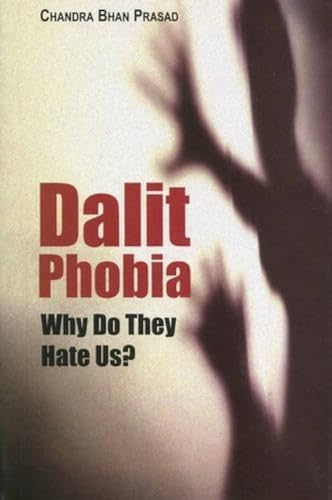dalit phobia hate von prasad chandra (2 Ergebnisse)
Produktart
- Alle Produktarten
- Bücher (2)
- Magazine & Zeitschriften
- Comics
- Noten
- Kunst, Grafik & Poster
- Fotografien
- Karten
-
Manuskripte &
Papierantiquitäten
Zustand
Einband
- alle Einbände
- Hardcover
- Softcover
Weitere Eigenschaften
- Erstausgabe
- Signiert
- Schutzumschlag
- Angebotsfoto
- Kein Print-on-Demand
Land des Verkäufers
Verkäuferbewertung
-
Dalit Phobia: Why Do They Hate Us?
Verlag: Vitasta Publishing Pvt. Ltd, 2006
ISBN 10: 8189766015ISBN 13: 9788189766016
Anbieter: GF Books, Inc., Hawthorne, CA, USA
Buch
Zustand: New. Book is in NEW condition. 0.97.
-
Dalit Phobia : Why do They Hate Us
Verlag: Vitasta Pub, New Delhi, 2006
ISBN 10: 8189766015ISBN 13: 9788189766016
Anbieter: Vedams eBooks (P) Ltd, New Delhi, Indien
Buch
Hardbound. Zustand: As New. New. Contents Foreword. Acknowledgements. 1. Introduction. 2. Dalits who they are. 3. Dalits and the social state. 4. History's longest fought war. 5. What do they have in common. 6. Dalit therapy. Who's who. References. Glossary. Index. Dalits have faced social ostracism of a peculiar kind. Centuries old prejudices pushed them to the southernmost corner of traditional Indian villages almost invariably. How was this possible all over the country unless there was a design or a conspiracy. Dalits constitute the same proportion of the total population throughout the country. Chandra Bhan enumerates the history behind this unique phenomenon and argues that this is not possible unless there was a colossal shifting of humankind. He draws profusely from Dr. B.R. Ambedkar. Hindutva forces may not take kindly to him for saying that Dalits were outside the Varna hierarchy and that they worshipped different gods and goddesses than the Varna followers. He talks of history's longest fought war between Dalits and non Dalits in the process of adjustment. Is the Varna peoples hate for the Dalits a manifestation of hatred of the victor for the defeated and the fear that the Dasas of the Vedic times may assert themselves and challenge the old Order. Chandra Bhan calls this Dalit phobia and argues that this gets passed on genetically through generations. Otherwise how does one explain that the chief executive of an MNC the editor of a newspaper and the fishermen at Nagapattinam (Tamil Nadu) share the same disdain when it comes to dealing with Dalits. It must be pathological and hence the treatment must also be so. He suggests Dalit therapy and demands international action to cure the disease while describing this as more vicious and pervading than Apartheid. Is it after the Poona Pact with Dr. Ambedkar that Mahatma Gandhi realised the need to work among the Harijans (Dalits). The author argues it is indeed so and points out to the bold arguments Dr. Ambedkar had with the Mahatma. The book also reflects why an average Dalit holds Dr. Ambedkar in such a high esteem. He could stand up and resist the Varna Order. It must have needed a massive courage to face the Mahatma and tell him about the centuries of injustices meted out to Dalits. Those who blame Macaulay for ills of India's education system are in for a shock as the book finds him as a liberator of Dalits. Chandra Bhan is an ardent Macaulay fan. Macaulay liberated India from the Brahmin oriented traditional education system and Varna jurisprudence he argues. He also holds Macaulay Party every year to celebrate the man and his ideas. While trying to analyse how Dalits gained importance and social recognition the book concludes the 1942 Quit India Movement to be a Vedic reaction to the British who had dared to induct Dr. Ambedkar in the Viceroy's Council and thus the Council's ruling elite. A must read for anyone trying to analyse Dalit psychology and the hate sense of the Varna Order for these deprived groups. People often confuse Dalits with the backward Castes. The book describes the Backward Castes as a part of the Varna Order unlike Dalits who are still treated as untouchables. This may help understand why the same yardstick of reservation was not applied for two different social categories by the Constitution makers. 228 pp.


